Mosaic Pieces
Welcome to the complete Maryland Mosaic.
The Mosaic is not presented chronologically but presents a randomized selection of Mosaic Pieces to spark your interest in a particular event or person. If you would like to have a more ordered chronological overview, use the six fixed time period options on the right of the screen to get a more immediate picture of an historical period. You can also explore by county or by category. Our predefined categories, tags, counties and chronological brackets will help you see links between the Pieces.
The collection has over 140 firsts, including events, people, places, objects, documents or buildings that are unique to Maryland and to the nation. The Mosaic is part of Maryland’s contribution to the U.S. 250th anniversary in 2026. It covers the period from 1776 to the present. You will find at least one Piece for every county and Baltimore City, making this a statewide project.
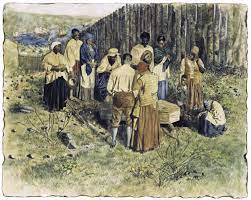
Queen family and others, enslaved, repeatedly sue for freedom
Many successful freedom lawsuit cases are filed by enslaved individuals on Jesuit-owned plantations in Southern Maryland between 1791 and 1864. Photo shows Southern Maryland enslaved family members at a funeral.
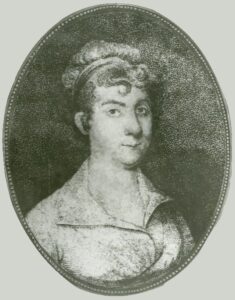
Printer Mary Katherine Goddard is first to print Declaration with all the signers names
Baltimore printer Mary Katherine Goddard is first to publish the entire Declaration in 1777 with names of all signers. She adds her own name at the bottom.

President Madison flees invading British Army, spends night in Brookeville
Pres. James Madison flees the British army. He spends night of August 26, 1814 in Brookeville with strongbox containing entire US treasury. The small Quaker Community of Brookeville is first to be the US Capital for a day.
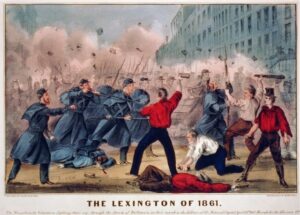
Pratt Street Riots are first bloodshed of the Civil War
Baltimore secessionist rioters attack Massachusetts infantry passing through the city on the way to Washington in 1861, marking the first bloodshed of the Civil War.
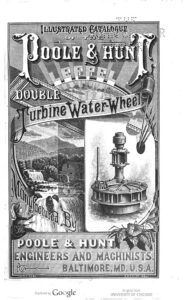
Poole and Hunt Foundry becomes an industrial hub
The Poole and Hunt Foundry and Machine Works, opened in 1854, makes construction in the US Capitol possible, specifically the dome and the House and Senate wings. Poole and Hunt becomes an industrial hub with 700 employees on the Jones Falls after the Civil War.
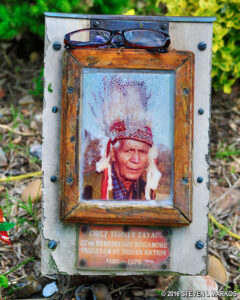
Piscataway-Conoy leader Turkey Tayac is buried on his ancestral land in a national park
Turkey Tayac (Phillip Proctor), the prominent Piscataway-Conoy leader of the mid-20th century, is the first Native American buried by an Act of Congress in a national park in 1978.
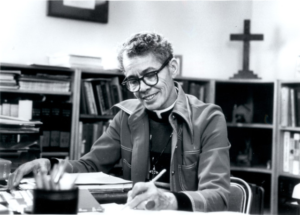
Pauli Murray becomes the first African American woman to be ordained as an Episcopal Priest.
After a long and successful career advocating for civil rights, Pauli Murray becomes the first African American woman to be ordained as an Episcopal Priest.

Patuxent Naval Air Station opens in St. Mary’s in 1942 in response to WWII
The Naval Air Station Patuxent River in St. Mary’s county has an 80+ year history as the Center for Naval Aviation Training and Testing.

Patty Cannon, notorious slave catcher
Patty Cannon, female head of a notorious gang of slave catchers, is arrested in 1829 and indicted for the murder of four Black men. She dies in jail awaiting trial.

Oldest Unitarian Church
The oldest Unitarian Church in the country, designed by Maximilian Godefroy, is opened in 1818, and is dedicated to “Unitarians” who “cherish the liberal sentiments on the subject of religion”.
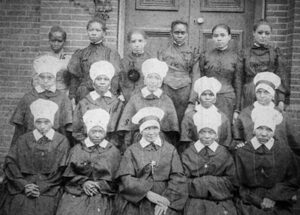
Oblate Sisters of Providence is founded as the first order of Black nuns.
Oblate Sisters of Providence is founded as first community of black Catholic sisters in US in 1829.
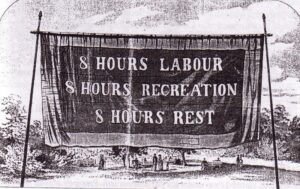
National Labor Union founded
National Labor Union is founded in 1866 in Baltimore, making it the first in the nation and calls for the 8 hour workday. In 1872 it creates a National Labor Party which is not successful in a national election

Nancy Pelosi serves as first female Speaker of the House
Nancy Pelosi is sworn in as the first woman and 52nd Speaker of the House in Congress in 2007. Born and raised in Baltimore she has deep political roots in the Italian American community.

Morgan State students stage first sit-in
Seven Morgan State College students stage the first sit-in at Read’s Drugstore in Baltimore in 1955. It ends peacefully and occurs 5 years prior to more famous Greensboro, NC sit-in.
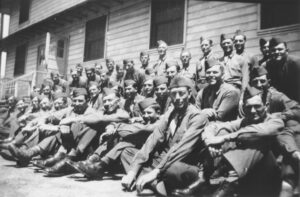
Military Intelligence Center, Fort Detrick and Camp David are created by the emergency of WWII
The Ritchie Boys, trained in Maryland in 1942, are an important secret weapon for the allies in World War II. Exiled European Jews are trained in intelligence for the allies. They interrogate prisoners, interpret, translate and read code.
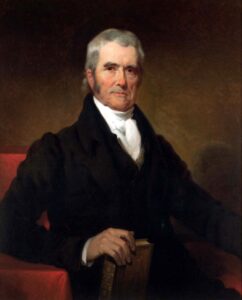
McCulloch vs. Maryland is the largest expansion of federal power to date
The 1819 US Supreme Court decision in the McCulloch vs Maryland Case expands federal power by ruling for the national bank over state banks. Chief US Justice John Marshall rules in favor of the federal government.


